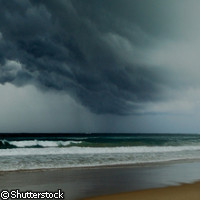Biodiversity affected by temperature fluctuations
As the climate warms and more fluctuations in temperature are recorded, scientists fear the worst for biodiversity and ecosystems. A new study of zooplankton in freshwater lakes, though, has shown that the greatest variety of the microscopic organisms is found in lakes that have the greatest variation in temperature. The report, published in the journal Ecology Letters, shows that climate change and global warming can have a variety of unexpected effects on ecosystems. The research reveals that while species which are able to tolerate only a narrow range of temperatures may be eliminated in an ecosystem with fluctuating temperatures, environmental temperature instability may also prevent dominant species from wiping out competitors. Dr Jonathan Shurin, an ecologist from the US University of California, San Diego (UC San Diego) who led the research team, said, 'Imagine species that have different optimal temperatures for growth. In a fluctuating world, neither can get the upper hand and the two coexist.' The research team looked at data gathered in 9 long-term ecological studies from 53 lakes in North America and Europe. Data were collected over a period of 3 to 44 years. As well as studying the zooplankton in the lakes, scientists also took physical measurements, such as temperature, oxygen and pH levels, and level of nutrients including carbon, phosphorous and nitrogen repeatedly over a number of seasons. Zooplankton respond quickly to changes in temperature because they reproduce rapidly. 'In a summer, you're sampling dozens of generations,' said Dr Shurin. 'For mammals or annual plants, you would have to watch for hundreds or thousands of years to see the same population turnover.' The researchers separately recorded yearly, monthly and weekly data, and they found the same pattern repeated: fewer numbers of zooplankton in lakes that had changeable levels of water chemistry and larger numbers in lakes that had changeable water temperatures. The temperatures of the lakes remained within normal limits, but in some lakes chemical levels, particularly pH and phosphorous levels, were higher due to pollution and acid rain. The study concluded that environmental fluctuations, including both temperature and chemical levels, could either boost or reduce biodiversity depending on the rate of fluctuation. 'It may depend on the predictability of the environment,' said Dr Shurin. 'If you have a lot of violent changes through time, species may not be able to programme their life cycles to be active when conditions are right. They need the ability to read the cues, to hatch out at the right time. If the environment is very unpredictable, that may be bad for diversity, because many species just won't be able to match their lifecycles to that.'
Countries
Canada, Switzerland, Germany, United States



